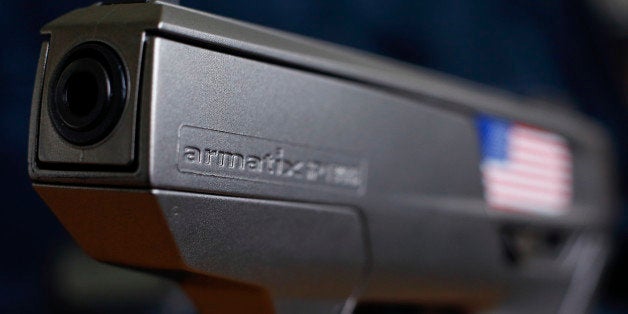
The man who still lives at 1600 Pennsylvania Avenue has just unveiled his plan to move forward with 'smart gun' technology, and while the Devil is always in the details and I'm not sure that all the details have been worked out, some of the hurdles that previously stymied the development of smart guns seem to have been anticipated and overcome.
The idea of electronically preventing someone other than the qualified owner from using a gun has been floating around for more than twenty years, but a combination of gun industry resistance, the usual bureaucratic inertia and consumer disinterest has kept this stuff on the back shelf. The biggest issue is not whether the technology works per se, but whether a workable 'smart' technology can be added to a gun without seriously impacting the retail price. I have heard different numbers from various 'smart gun' inventors and entrepreneurs, but all I know is that the one market-ready gun, the Armatix iP1, has a retail tag in excess of $1,600; in other words, fuggedaboutit.
The Obama plan surmounts this problem somewhat by approaching the entire issue from the perspective of developing a new law-enforcement technology and using federal funds both to help develop the product as well as to subsidize police agencies that might then adopt the gun. The good news is that the civilian gun market is very much influenced by what the cops carry and buy, the bad news is that a subsidized police price doesn't necessarily translate into an over-the-counter deal that will bring gunnies into my shop.
Leaving that issue aside for the moment, what impresses me most of all about this plan is the decision to create a bona-fide procurement process that reminds me of when the Army junked the Colt 1911 pistol back in the mid-'70s and went to the Beretta M9. First they figured out what they wanted, then they issued an RFP, then they ran a proof test to make sure that submitted guns actually met the design requirements and worked, then they got serious and did the requisite torture tests at the Aberdeen Proving Grounds to validate that the gun wouldn't fall apart after it was shot thousands of times, dropped into water and sand, in other words replicating what happens to any military weapon that is carried in the field.
From what I can see in the White House report, a similar plan has been developed for smart guns, which will have to get through two test phases before the technology is considered to work. Entry requirements for the competition, however, do not specify what type of gun is permitted, nor the caliber of ammunition. Nor has the NIJ published the pass-fail criteria for the second and much more rigorous test phase. So this initiative is still focused on testing the technology rather than testing a specific gun that might be adopted by law enforcement agencies. The "baseline requirements" for such a weapon (or weapons) will be determined following the Phase 2 test results.
If a technology exists that will meet the rigorous performance criteria that will no doubt be adopted, I am sure that we will see some product being carried by a few cops on a provisional basis by the end of the year. But if the purpose of smart guns is to diminish gun accidents caused by an unqualified individual grabbing a gun, the number of such shootings involving law enforcement personnel is a tiny fraction of the accidental civilian shootings that take place every year. Which means that the issue of commercial market penetration must still be addressed.
On the other hand, it was nice to see the NRA's positive response to this report which I quote: "At a time when we are actively fighting terrorists at home and abroad, this administration would rather focus the military's efforts on the president's gun control agenda." Now when do you think the NRA wrote that one?
